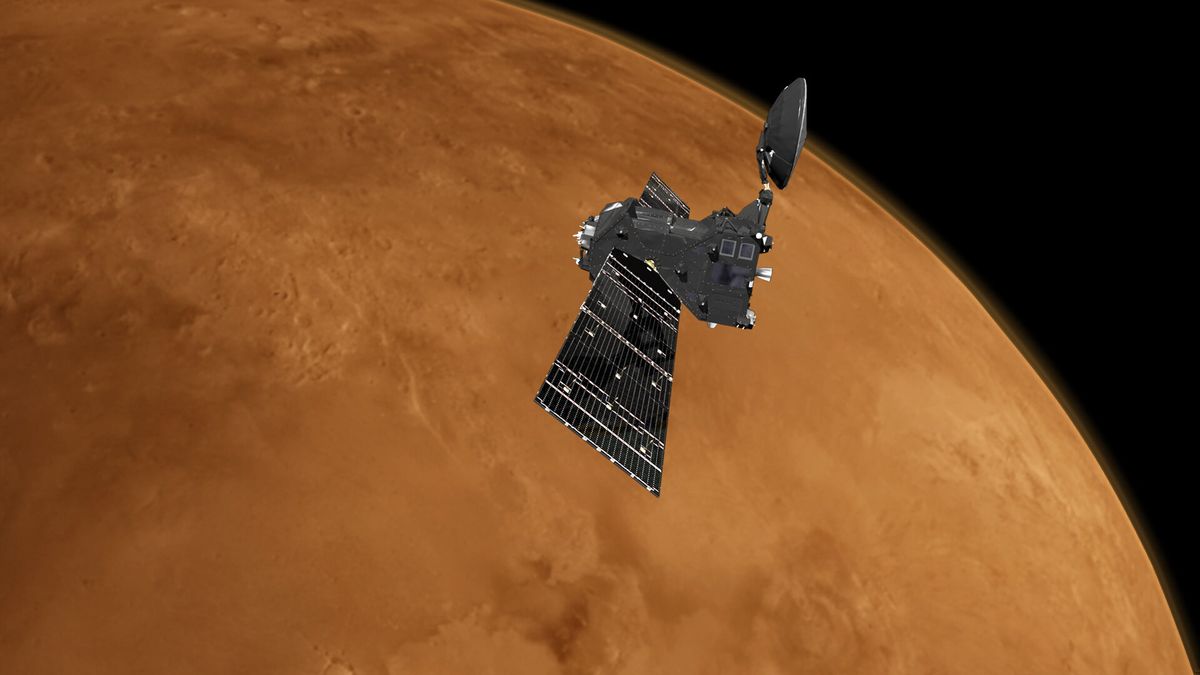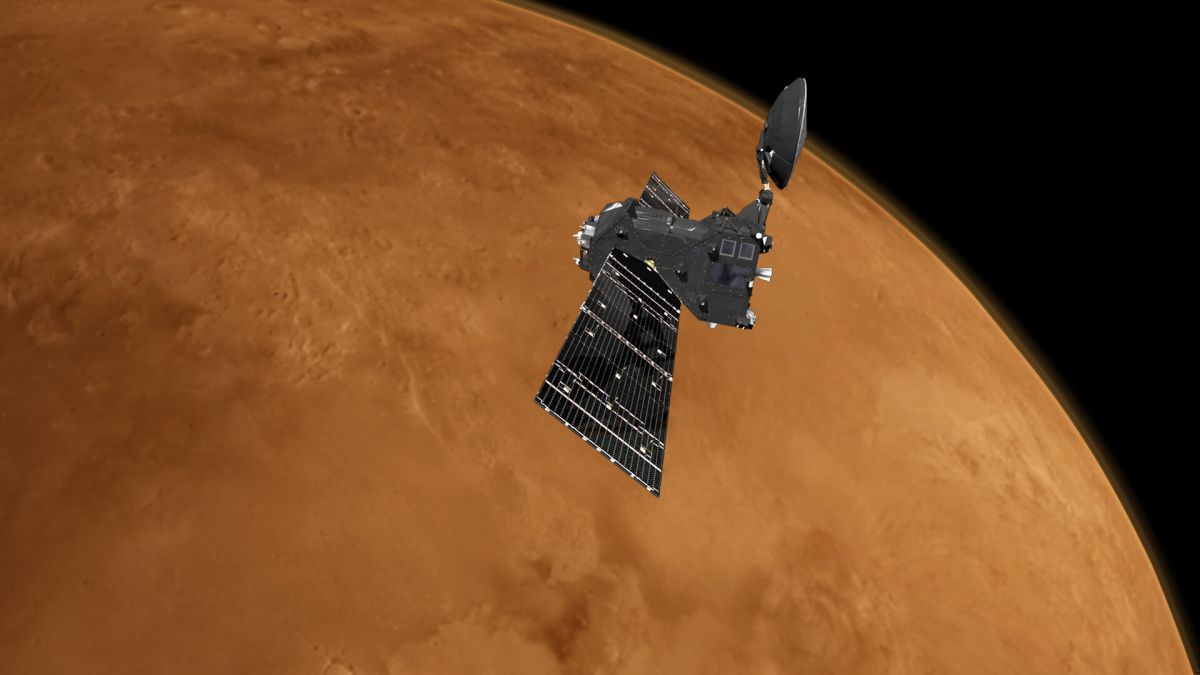
An ambitious new SETI (search for extraterrestrial intelligence) test is underway.
At 3 p.m. EDT (1600 GMT) today (May 24), Europe’s Trace Gas Orbiter Mars probe beamed a coded message toward Earth. Sixteen minutes later, it was received by three big radio telescopes on Earth, kicking off a global effort to decipher the cryptic signal.
That effort is A Sign in Space, a multiweek project led by Daniela de Paulis, the current artist in residence at the SETI Institute in Mountain View, California and the Green Bank Observatory in West Virginia.
“Throughout history, humanity has searched for meaning in powerful and transformative phenomena,” de Paulis said in a statement.
“Receiving a message from an extraterrestrial civilization would be a profoundly transformational experience for all humankind,” she added. “A Sign in Space offers the unprecedented opportunity to tangibly rehearse and prepare for this scenario through global collaboration, fostering an open-ended search for meaning across all cultures and disciplines.”
Related: The search for alien life (reference)
The Green Bank Observatory is one of the three scopes that listened for the Trace Gas Orbiter‘s signal today, along with the SETI Institute’s Allen Telescope Array in northern California and the Medicina Radio Astronomical Station in northern Italy, which is managed by the Italian National Institute for Astrophysics.
Researchers at each of those facilities will now process the signal and make it available to their colleagues around the world and to the public at large. The project team wants folks from a range of backgrounds to study the signal and try their hand at deciphering it.
“This experiment is an opportunity for the world to learn how the SETI community, in all its diversity, will work together to receive, process, analyze and understand the meaning of a potential extraterrestrial signal,” Wael Farah, project scientist for the ATA, said in the same statement.
“More than astronomy, communicating with E.T. will require a breadth of knowledge,” Farah said. “With A Sign in Space, we hope to make the initial steps towards bringing a community together to meet this challenge.”
You can learn more, and submit your own ideas about the message, via the project’s website.
Related stories:
You can participate in A Sign in Space in other ways as well.
For example, over the next six to eight weeks, the project team will host a series of Zoom meetings that will focus on the societal implications of detecting a “technosigature” from advanced alien life, among other topics.
You can learn more about these workshops, and register to attend them, here.



